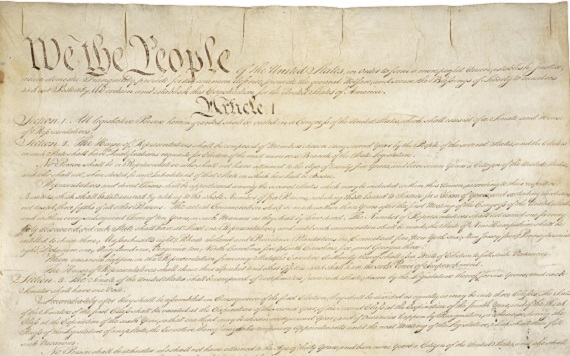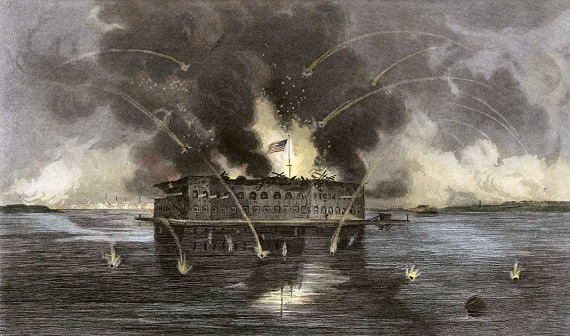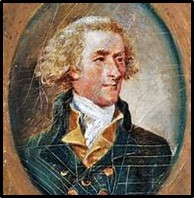
The beginning of the American political order goes much further back than the Philadelphia Convention of 1787. Political scientists and political theorists are understandably fixated on the Constitution and the convention that produced it. Eric Voegelin, Willmoore Kendall, and a few others go even further back searching for a continuity in the political symbolization present in some certain select, but not all, American political documents of the colonial era. Origins and foundings are broader and more complex things than what a selection of documents or the deliberations that one constitution convention can reveal. Any political order is bound up with the cultural, religious, social and political ethos and eidos of a people and their society. In the American experience, there was not one founding but thirteen and these “foundings” took place over a period of slightly more than a century. Present in these thirteen political orders were powerful commonalities and significant differences among each of the thirteen distinct societies. What is the most significant cooperative action on the part of these thirteen states, the War for Independence, was as much a source of division as it was of unity. All the colonial governments seceded for the British Empire, but only a minority of colonists, one-third if we believe Mr. John Adams, perhaps as low as one-fifth if some scholars are to be believed, favored secession from Great Britain. A plurality just wanted the war to go away. Of course, this is not important, unless one is in the habit of introducing your constitution with the phrase, “We the People . . ..”
The story of the American political order, at least to this point, is the collapse of the influence and autonomy of the local into a consolidated political and financial order, what Jefferson’s people called monarchy. This order is not merely political, it includes cultural, social, religious, and political mores and habits national in their scope and often emanating from institutions closely aligned with the centers of political and economic power. American values and views regarding marriage and family were profoundly and quickly changed by the entertainment produced in Hollywood, financed by Wall Street, and regulated by the politicians and civil servants in Washington, D. C. What we have now is an American imperial order under enormous strain from both external and internal pressures. This American imperial order experienced a meteoric rise after Appomattox and is now undergoing a similarly fast meteoric decline. The symptoms are there for all to see. We have not decisively won an armed conflict since World War Two, we have been bogged down in endless conflicts on the peripheral parts of the American zone of hegemony and resource extraction. The national political conflicts have acquired a tone of stridency incompatible with republican compromise. In Washington, D. C., the conflicts between Trump and his enemies are really about nothing more than holding on to power and its privileges. Both President Trump and his adversaries are attempting to preserve a status quo that can no longer be preserved. Trump’s status quo is an old-fashioned America flexing its industrial and productive might on the world stage. His opponents, the surveillance state, the legacy media, and the beneficiaries of forever war, are committed to a state of affairs allowing them to aggrandize their own power and wealth no matter the cost to ordinary Americans and their civil liberties, not to mention the poor unfortunates across the globe in the sights of the latest drone strike. If you wish to find a villain, the cartographer of this mad destiny, one need look no further than Alexander Hamilton, who mapped the road to political and financial consolidation. True, Hamilton may recoil in horror at what American has become, but what we now have is the logical outcome of his system.
Some defenders of the constitution will view the current disorder in the American state as a deformation of what the “Founders” had in mind. This raises the question as to what the gentlemen at the Philadelphia Convention had in mind for the new plan of government. This is not as easy to discern as some scholars believe. Take the case of the man reputed to be the “Father of the Constitution,” James Madison. Is the Constitution the one explicated by Madison, via the medium Publius, in the Federalist Papers? Both Madison and Hamilton argued against the inclusion of a bill of rights in Federalist 39 and Federalist 84, respectively. Hamilton, true to form, thought the whole idea of a bill of rights was “not only unnecessary . . . but would even be dangerous.” Or perhaps we should look to Madison’s comment to a correspondent later in life when he wrote that the true meaning of the constitution was to be derived from the proceedings of the state conventions that ratified the new plan of government. And if we choose this latter path, which state conventions shall we look to for the meaning of the Constitution?
What we do know from the history of the republic is that the Novus Ordo Seclorum came out of its cradle a bit wobbly. In the first sixty years of the new union’s existence, at least four major constitutional crises threatened an end to the American experiment. The fourth, erroneously referred to as the Civil War, witnessed the grandchildren of the generation who seceded from England filling each other’s bodies with lead. Better evidence for the existence of fundamental disagreements regarding the meaning of the Constitution and the nature of the federal union does not exist than the over 600,000 who lay dead on the battlefields. What has become of the Novus Ordo Seclorum since Appomattox? In substance, it is a consolidated unitary state where the old state militias were federalized into a national guard, a federal income tax was fixed upon the people, a new central bank with a monopoly on the currency was created, the federal bureaucracy metastasized in both numbers and political power, and the imperial regime of forever war was inaugurated.
Nationalists with a triumphalist bent will argue the necessity and the good of the American imperial regime. They believe there was no other choice present in 1789, the thing needed to be set in motion to achieve something called American greatness. The old Roman question, “Cui bono?” applies here. Were there no other choices in 1789? Crucial situations in the foreign and domestic arenas needed to be addressed. The British had not yet withdrawn from the Northwest as stipulated in the Treaty of Paris. The Spanish denied American shippers the right of deposit in New Orleans. All European nations were reluctant to extend any sort of most favored nation status to the American confederacy. Shay’s Rebellion underscored the potential for civil disorder among the unpaid veterans of the recently won war for independence. No doubt, the framework of the confederation needed bolstering and improving. Most Americans in public life believed this was possible if the Congress were given a source of revenue independent of the states, say a five percent ad valorem duty on imports. Such a duty could fund a naval force crucial to protecting American commercial interests. Some sort of free trade zone among the members of the confederacy was important to achieve, as was also the framework for a unified foreign policy. The states sending representatives to the Philadelphia Convention had these reforms and issues in mind. The delegates from Delaware, Pennsylvania, Virginia, North Carolina, and New Hampshire were given implicit instructions to modify the Articles of Confederation. The legislatures of Massachusetts, New York, and Maryland were much more explicit in their instructions to do nothing more than modify the Articles. Only the delegates from New Jersey received a blank check to do as they saw fit at the convention. All but the delegates of New Jersey exceeded their authority. The plan for government that came from the Philadelphia convention was what Patrick Henry referred to as a beautiful butterfly with “poison under its wings.”
The supremacy clause of the Constitution is a tale of both poison and the operation of the law of unintended consequences. James Madison introduced a motion give the new national legislature a veto over state laws. The motion met considerable resistance and debate. Luther Martin of Maryland, a committed defender of the rights of states, reached back to the old New Jersey plan for a compromise. Martin proposed that the laws made by Congress and the treaties made and ratified by the new government would be the supreme law of the “respective states, as far as those acts or treaties relate to the said states” and judiciaries of the states were bound by these laws and treaties “in their decisions.” The clause as proposed by Martin was unanimously agreed to without dissent at the convention. In later drafts it was altered to further strengthen the hand of the federal government, federal laws and treaties being the “supreme law of the land,” and thus became the cornerstone of federal judiciary power. Martin had intended the laws of the federal government to enjoy supremacy only when explicitly contradicted by state law and to enjoy a supremacy over state constitutions and bills of rights.
The predicament for the defenders of states’ rights and local governance is even worse than that caused by the supremacy clause. John Randolph of Roanoke once labeled the Constitution a “paper barrier,” easily trespassed upon and violated. Within its confines, any number of clauses can be and have been used to justify the most egregious power grabs. Take you pick: the treaty making clause, the war powers clause, the general welfare clause, or as Randolph warned, all these powers in the aggregate will be invoked to grow the federal leviathan at the expense of the states and the people. If it is true that the Constitution brought forth a governing order not seen since the High Middle Ages, the imperium in imperio, it has proven even more correct that the Constitution, in the words of Patrick Henry, “squints at monarchy.” The parchment barriers erected against monarchy and consolidation, primarily the separation of powers and the bill of rights, are only as effective as the force which backs them. In this age of the surveillance state, star chamber proceedings and black budgets, and the flouting of any rule of law by our politicians and their financial backers, how is it that Henry was not right?
The constitutional order framed in Philadelphia may well be the result of a great American defect—impatience. At the Virginia state ratifying convention, Patrick Henry pleaded for due time for careful deliberation. It was not forthcoming, and it is significant that the champions of the Constitution, especially Edmund Randolph, made the argument in favor of haste. When the Second War of Independence, the War Between the States, ended in the defeat of the secessionists, what Henry and Randolph envisioned came to pass, an American imperium of consolidated and omnipresent government.
If impatience in part resulted in the defeat of the localists, patience will assure their victory. The Hamiltonian order is not sustainable, we are living through the twilight of the international American imperium, and at home we flirt with domestic and civil unrest. The restoration of the local will begin in the localities of America. It will result from living deeply in the communities where we are situated, from being good neighbors, and engaging in the public affairs of our local neighborhoods, towns, and counties. It requires a secession of the heart from the propaganda and distortions directed at us by Leviathan and its handmaiden, the legacy media, and a turning toward faith, the old virtues: theological, cardinal, and civic, family, tradition, and property. Next to true charity, the willing of the good, it requires patience and a commitment to “the long game.” We plant seeds in our time, we will not live to see the harvest—but our affection and charity reaches out to the generations who will benefit from our husbandry. Thus, will the authentic American order be restored.






